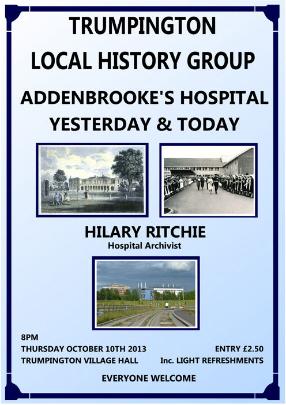
Poster for the Addenbrooke’s Hospital talk. Sylvia Jones, October 2013.
Hilary Ritchie described the career of Dr John Addenbrooke, who was born in 1680, came up to Catharine Hall (later St Catharine’s College), and practiced medicine in France and London. He died in Buntingford in 1719, at the age of 39, and in his will left his wealth to his widow and then to build a hospital in Cambridge to serve the town, surrounding parishes and county. There is limited archival information about Dr Addenbrooke but St Catharine’s College has his medical chest and library. There is a blue plaque in his memory near the main entrance to the current hospital.
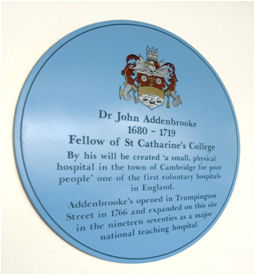
Blue plaque to Dr John Addenbrooke near the hospital entrance. Addenbrooke’s Hospital Archives.
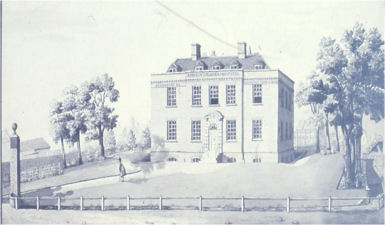
The original Addenbrooke’s Hospital, 1770. Addenbrooke’s Hospital Archives.
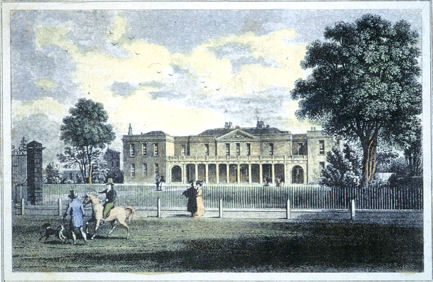
The extended Addenbrooke’s Hospital, c1820. Addenbrooke’s Hospital Archives.
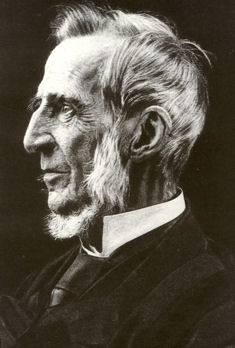
Sir George Paget, Sir George Murray Humphry and Alice Fisher, Matron of Addenbrooke’s 1877-1882. Addenbrooke’s Hospital Archives.
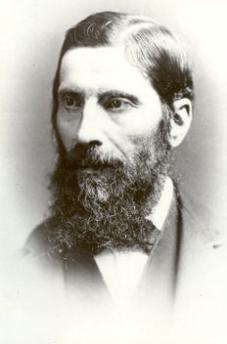
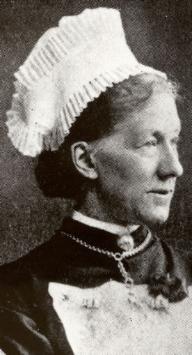
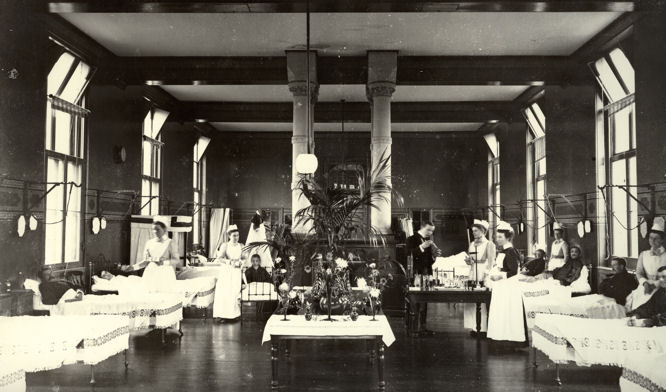
Griffith Ward, Old Addenbrooke’s, 1896. Cambridgeshire Collection.
There were further building projects in the early 20th century, including an additional floor for Tipperary and Musgrave wards, the Outpatients Department (now Brown’s Restaurant), and an extension to the left of the main building which opened in 1932 housing private wards and a children’s ward. A separate maternity hospital was developed in the former workhouse in Mill Road.
The hospital became a teaching hospital in 1948, part of the United Cambridge Hospitals.
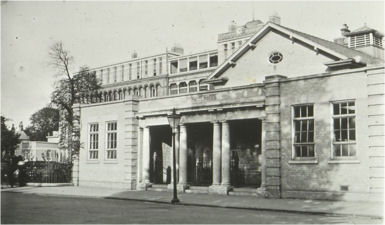
The Outpatients Department. Addenbrooke’s Hospital Archives.
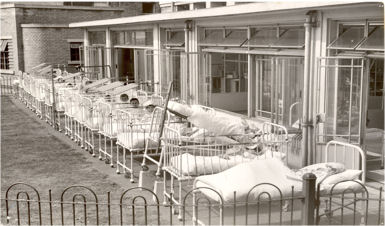
Beds outside the Children’s Ward. Addenbrooke’s Hospital Archives.
Soon after 1948, a new site was purchased off Hills Road, close to Trumpington. Building work began in 1958, with the initial emphasis on Outpatients, x-ray department, etc., and the Laboratory of Molecular Biology (LMB). The first patients were treated in October 1961 and the new hospital was opened by the Queen in May 1962. Work then proceeded on Phase II which was completed in 1972, including the construction of the main chimney. The Rosie Maternity Hospital opened in 1983, after the project was advanced when Sir David Robinson gave a donation. The old site closed in October 1984 and was sold to the University.
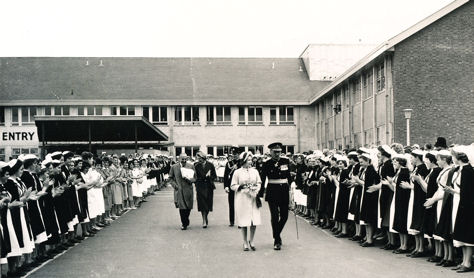
The Queen at the opening of New Addenbrooke’s, 1962. Addenbrooke’s Hospital Archives.
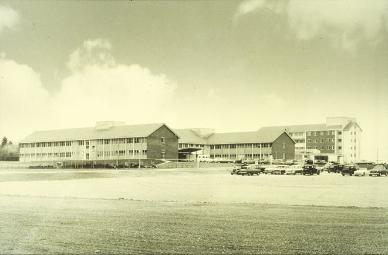
Out patients, New Addenbrooke’s, c1962. Addenbrooke’s Hospital Archives.
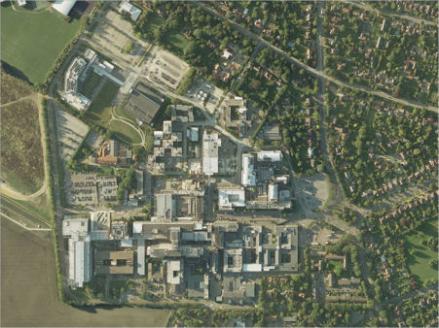
Aerial view of Addenbrooke’s Hospital, 2011. Addenbrooke’s Hospital Archives.
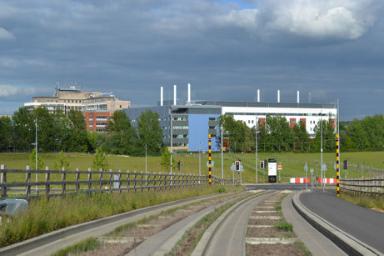
Addenbrooke’s Hospital, from the Busway bridge. Andrew Roberts, 16 June 2013.
Hilary was sure that Dr John Addenbrooke would have been very proud of the hospital with his name. Hilary explained that the Addenbrooke’s Hospital archive collection had been developed since the 1980s. She hoped there would be a new museum and archive within the future developments. She mentioned that the work of the archive was funded by the Addenbrooke’s Charitable Trust (ACT), with grants from bodies such as the Wellcome Trust. She welcomed enquiries and information relevant to the history of the hospital, to Hilary Ritchie, Hospital Archivist, tel 01223 586737, email Hilary.Ritchie@.addenbrookes.nhs.uk . There is information about the Hospital Archive and the archive catalogue is available online through the Janus system.